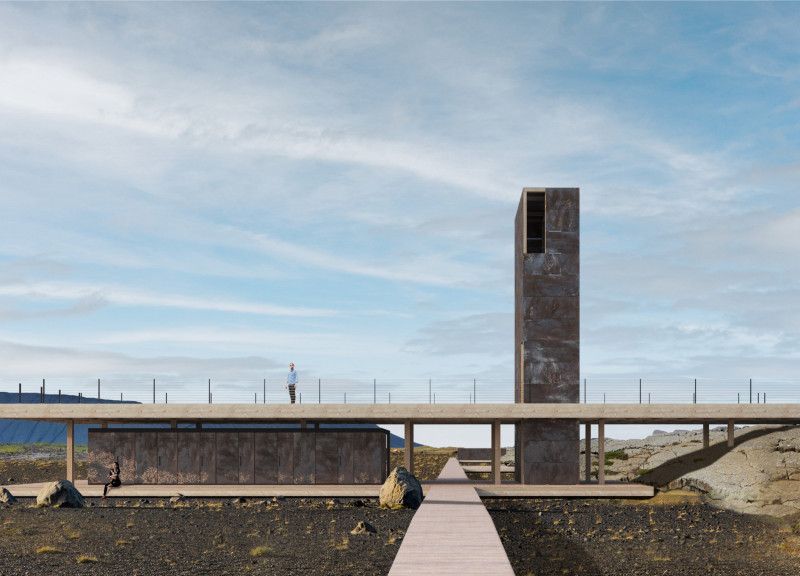5 key facts about this project
Functionally, the Iceland Cave Tower serves as a visitor center and observation point, allowing easy access for tourists eager to engage with the extraordinary landscape. The design aims to accommodate a variety of activities, including educational programs, guided tours, and community events. By creating spaces that are both welcoming and informative, the project fosters a deeper understanding of the area’s geological significance and the importance of preserving its natural beauty.
One of the most notable aspects of the design is its responsiveness to the landscape. The tower’s form mimics the jagged contours of the surrounding terrain, crafted to enhance views while blending seamlessly into the environment. The careful selection of materials further amplifies this connection; the use of weathered steel for the exterior cladding echoes the rugged environment, while wood elements on the interior create a warm and inviting atmosphere. The architectural choices reflect a deep respect for the Icelandic landscape, prioritizing harmony over disruption.
The layout of the tower is designed to maximize visitor experience and engagement with the natural surroundings. Clear pathways guide guests through the site, promoting exploration while minimizing ecological impact. These paths are strategically placed to avoid compromising existing flora and fauna, ensuring that the project adheres to sustainable practices. The incorporation of large glass panels within the structure allows natural light to flood the interior spaces and provides expansive views of the landscape, dissolving the boundaries between inside and out.
Unique design approaches in the Iceland Cave Tower extend to its structural solutions. The building is elevated to enhance perspectives, allowing visitors to appreciate the geological features from various vantage points. This elevation also reflects a consideration for local climate conditions, with features designed to withstand Iceland’s weather patterns. The internal spaces are planned to be flexible, accommodating various uses—from educational workshops to small gatherings—while maintaining a coherent flow that encourages interaction among visitors.
In addition to its aesthetic and functional elements, the project promotes a sense of community. Designated areas within the tower provide spaces for public engagement, inviting local residents and visitors alike to gather, learn, and share experiences. By placing an emphasis on community interaction, the project transcends its role as a mere architectural structure and becomes a focal point for cultural exchange and environmental advocacy.
In summary, the Iceland Cave Tower is an architectural project that skillfully integrates with its natural context while serving multiple community functions. Through thoughtful design approaches, such as material selection, spatial organization, and emphasis on sustainability, the tower enhances the visitor experience and fosters a deeper connection with the Icelandic landscape. For more insights into the architecture, including detailed architectural plans, sections, and design concepts, readers are encouraged to explore the project presentation further to gain a comprehensive understanding of this significant project.


























